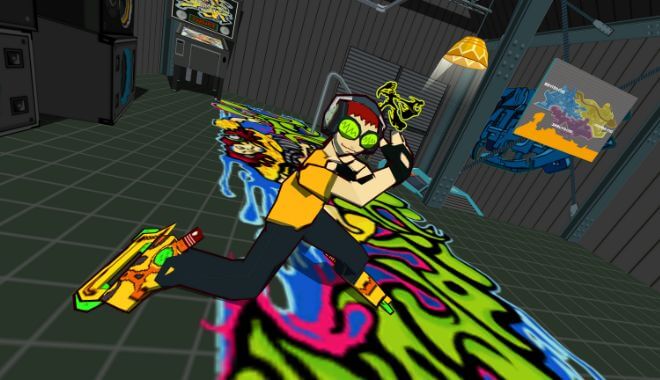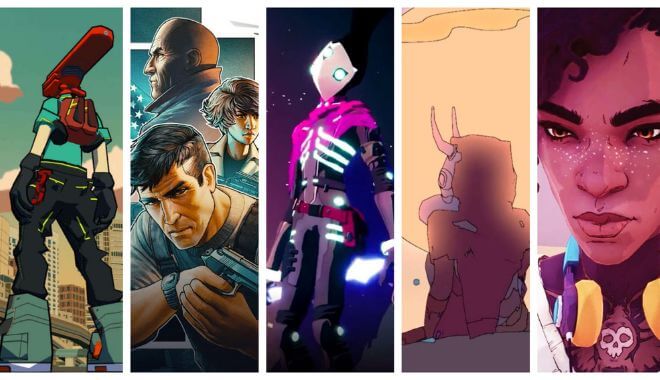
You may have seen some 2D or 3D animated movies and video games that look like they were hand-drawn or have a cartoon-like style.
Usually, Japanese anime films and video games feature this distinct look.
This type or technique of animation is known as cel-shading animation. Some also refer to it as toon shading.
Although this is one of the most prominent 2D and 3D animation styles, the technology is fairly new and only around 30 years old.
What Is Cel Shading?
Cel shading can be described as a technique that gives any 3D or 2D rendering a cartoonish or hand-drawn effect. A cell shader gives the appearance of a traditional drawing with a flatter surface and hard, unfinished edges. It can also be used to give the background a paper-like effect.
Fun Fact: Cel shading comes from the term celluloid, a clear plastic sheet that was initially used for traditional-looking hand-drawn artwork.
History of Cel Shading
You’ll notice that this style is mostly prominent in anime. Although celluloid sheets have been around since 1914, cel shading animation, or toon animation, came into existence only recently in the ‘90s.
However, Japanese creators have been using it long before that. In fact, you can see it in Akira, a movie released in 1988. Animation enthusiasts applaud this film for making cel shading a thing among Western creators as well.
The tool resurfaced in the 2000s because of the success and love for these “hand-drawn” cartoons. Besides audiences liking this style, the animation tool was inexpensive, allowing many creators to hop on the bandwagon.
Cel Shading Animation in Video Games

In recent years, cel shading has been more popularly seen in games. Games like Goosebumps: Attack of the Mutant (1997) and Jet Set Radio (2000) were among the first to implement such a style. In fact, the latter also earned the “Excellence in Visual Arts” award, leading almost everyone to adopt the style.
Today, the gaming industry has a variety of games that use cel-shading to achieve a unique look.
Nowadays, most animation creators, especially Japanese ones, draw the basic outlines by hand, leaving the intricacies to cell shading animation. However, manually creating cel-shading animation isn’t their only option.
Modern applications are also capable of creating similar outlines. It all comes down to personal preferences.
Why Is Cel Shading So Popular?
In a world where technology is constantly advancing, why are animators trying to make cartoons look traditional or hand-drawn? Well, it all boils down to aesthetic tastes.
For example, anime is known for its hand-drawn style features. Without their signature style, one may not even recognize their clips. Studio Ghibli and Nintendo are excellent examples of this.
In addition, it’s an easy way to set the tone for your work. You can change the colors and borders based on the genre and themes to make it look cohesive. To explain this in simple terms, we will go back to Studio Ghibli, an acclaimed Japanese animation film studio.
Their cottage-core style uses subtle pastel colors to emphasize the indoors and vibrant colors to depict outdoor environments. Their drawings have a thinner border which changes when the scene is dark. This style makes them stand out from the rest.
Cel shading animation, often misspelled as cell shading, looks good on multiple platforms without losing its quality, resolution, scalability, and overall quality, making it a top choice for many.
Features That Make It Stand Out

Cel shading animation is characterized by:
- Drawings that look hand-drawn, even if they’re done digitally
- Colors that don’t shift as much
- Fewer shades compared to 2D and 3D animation
- Simple style
- Defined outlines that make it easier to differentiate between colors and palettes
Creating Cel Shading Animation
Before starting, you need to understand your software. Check if your 2D or 3D animation software already has a cel shading tool. If not, you’ll need to enable it or switch to software that offers it.
Certain software needs special plug-ins or downloads to make the cel shading tool work. Depending on your software, you can modify effects like motion blur.
You should also decide on the style you want to achieve, whether you’re going for cartoonish or more realistic textures. Since cel shading works by applying a shader to 3D models, you must create the models first.
Some like to hand draw guidelines and import them to the software, but others prefer making them in software like Maya, Blender, or 3ds Max.
Maya Animation: Toon Shader
Creators use different approaches to creating cel-shading materials. However, the most common one is the toon shader, which is designed to simulate the look of a hand-drawn animation.
Simply switch “Lock Transparent Pixels” on to create an outline and prevent any color spills. You can also switch between brushes to achieve the desired look. Some software will allow you to add extensions, so make the most of them.
Limitations of Cel Shading
Although cel shading can set the tone and help you develop a unique style, it does have its shortcomings.
For starters, the tool is quite complicated. Achieving a balance between realism and cartoonish styles can be challenging. Sometimes, even going overboard with the colors can make your work look gaudy. Meanwhile, using only a few colors can make your work dull and uninteresting.
Working with cel shading involves a lot of tweaking and adjustments. Although the results may take longer, a little practice and experimenting are well worth it.
Examples of Cel Shading
As mentioned earlier, cel shading has been used in multiple formats because of its aesthetics, rendering, and outcome. Some popular examples of cel shading are listed below.
Cel Shading in Animated Movies
Spirited Away by Studio Ghibli
The movie was released in 2001. Studio Ghibli is known for using Toonz primarily for their creations and Spirited Away was no different. Other Studio Ghibli movies that use cel shading include Princess Mononoke.
Attack On Titan by WIT Studio and MAPPA Studio
The dark anime series was created using an amalgamation of traditional hand-drawn art and cel shading. The studio also heavily relies on computer-generated animation to depict camera movements and other fast-paced shots.
One Piece movies by TOEI Animation
The original anime movies used cell shading very well. Their primary software is RETAS, a 2D animation bundle that features multiple brushes for rendering.
Other notable animations that have used cel shading include One Punch Man by Madhouse, Fate/Stay Night series by Ufotable, and My Hero Academia by Studio Bones.
Cel Shading in Games
Jet Set Radio
Jet Set Radio is one of those pivotal games that changed the landscape of gaming forever. SEGA Dreamcast set a precedent for developers after gamers couldn’t get enough of the game. The visuals were stunning for its time and the music changed how people perceived video game music.
The Legend of Zelda Series
The tenth installment of Zelda’s gaming series utilized cel-shading. After the 2003 experiment, all installments had the same technique. Although the iterations adapted to new styles and modifications, the basic look has stayed the same.
Hades
The 2017 game by Supergiants got creative with cel shading. The game’s visuals elevated the gaming experience and storyline, engaging gamers like never before. Games and critics have gone on record to say that the game’s visuals add to the game’s fictional world.
Other prominent games that used cel shading include the Guilty Gear series, Viewtiful Joe, Ni No Kuni, Asura’s Wrath, Breath of Fire: Dragon Quarter, Naruto: Clash of Ninjas, Dragon Ball Fighter Z, DNF Duel, No More Heroes series, Dragon Quest VIII and IX, and Killer7.
Conclusion
When working on animation, consider the software, feel, and aesthetics you’re going for. Cel shading is an excellent option for those who want that cartoonish or comic-like effect on their 2D and 3D creations.
Using it allows you to make drawings look hand-drawn even if they’re done digitally. It also provides proper color dispersion and gradients that look good on almost all platforms. That said, the learning curve can be quite steep, especially if you’re a beginner.
Top-rated games and animated movies have adapted this style, making it one of the most sought-after aesthetics. Many notable entertainment companies employ some variation of cel shading from Studio Ghibli to WIT Studio and SEGA Dreamcast to Supergiants.
Because of its widespread adoption, popularity, and more cost-effective 3D rendering tools, this beautiful and distinctive style is here to stay.
Image Sources
https://fingerguns.net/features/2020/07/27/get-back-in-your-cel-9-games-breathing-new-life-into-cel-shading/
https://www.pcgamer.com/jet-set-radio-hd-5k-gallery/
